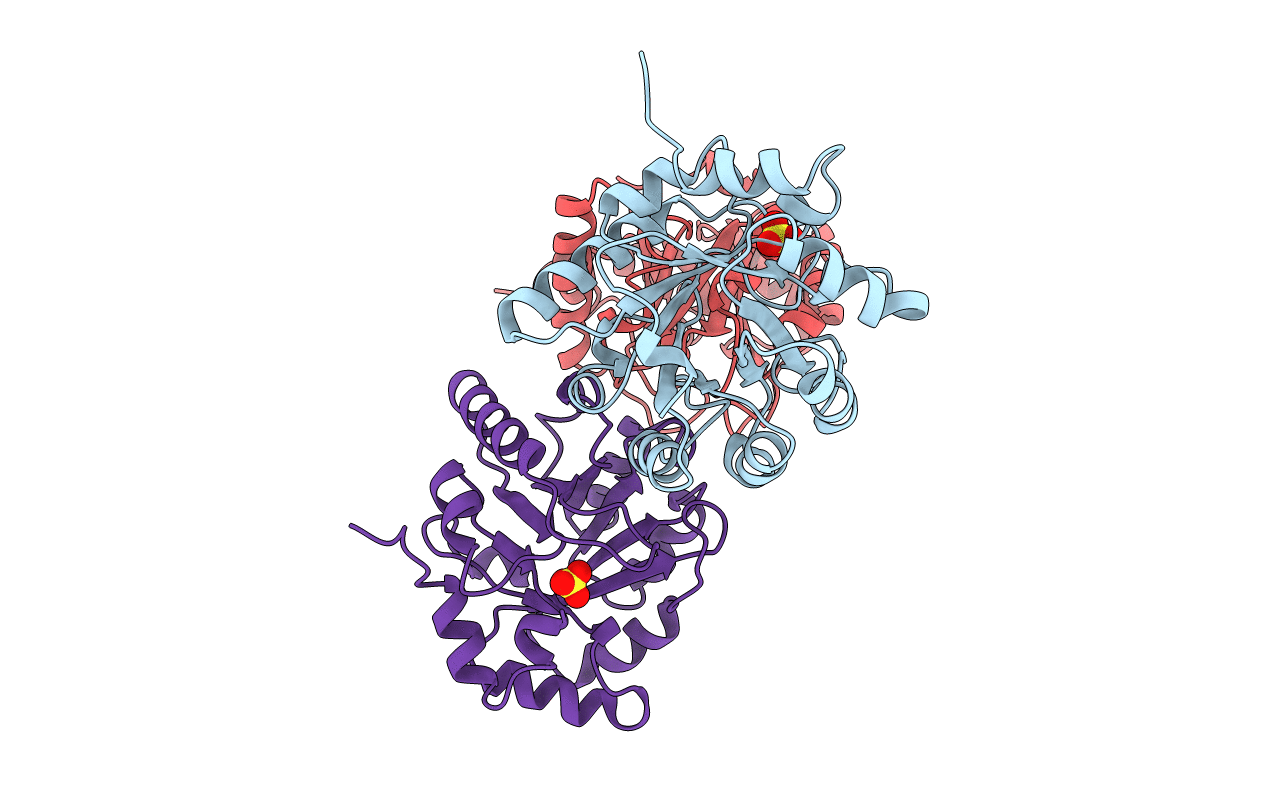
Deposition Date
1998-12-01
Release Date
1999-04-07
Last Version Date
2023-12-27
Entry Detail
PDB ID:
1RPX
Keywords:
Title:
D-RIBULOSE-5-PHOSPHATE 3-EPIMERASE FROM SOLANUM TUBEROSUM CHLOROPLASTS
Biological Source:
Source Organism:
Solanum tuberosum (Taxon ID: 4113)
Host Organism:
Method Details:
Experimental Method:
Resolution:
2.30 Å
R-Value Free:
0.21
R-Value Work:
0.17
Space Group:
P 32 2 1


